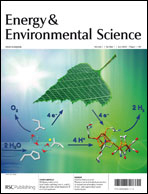The Committee on Space Research (COSPAR) was established on October 3, 1958 by the International Council for Scientific Unions (ICSU). Among COSPAR's objectives are the promotion of scientific research in space on an international level, with emphasis on the free exchange of results, information, and opinions, and providing a forum, open to all scientists, for the discussion of problems that may affect space research. These objectives are achieved through the organization of symposia, publication, and other means. COSPAR has created a number of research programmes on different topics, a few in cooperation with other scientific Unions. The long-term project COSPAR international reference atmosphere started in 1960; since then it has produced several editions of the high-atmosphere code CIRA. The code "IRI" of the URSI-COSPAR working group on the International Reference Ionosphere was first edited in 1978 and is yearly updated.
The International Society of Biometeorology (ISB) is a professional society for scientists interested in biometeorology, specifically environmental and ecological aspects of the interaction of the atmosphere and biosphere. The organization's stated purpose is: "to provide one international organization for the promotion of interdisciplinary collaboration of meteorologists, physicians, physicists, biologists, climatologists, ecologists and other scientists and to promote the development of Biometeorology".

The Indian Academy of Sciences, Bangalore was founded by Indian Physicist and Nobel Laureate C. V. Raman, and was registered as a society on 27 April 1934. Inaugurated on 31 July 1934, it began with 65 founding fellows. The first general meeting of Fellows, held on the same day, elected Raman as president, and adopted the constitution of the Academy.
CSIRO Publishing is an Australian-based science and technology publisher. It publishes books, journals and magazines across a range of scientific disciplines, including agriculture, chemistry, plant and animal sciences, natural history and environmental management. It also produces interactive learning modules for primary school students and provides writing workshops for researchers.
Environmental Science: Processes & Impacts is a monthly peer-reviewed scientific journal covering all aspects of environmental science. It is published by the Royal Society of Chemistry and Kris McNeill is the editor-in-chief. The journal was established in 1999 as the Journal of Environmental Monitoring and obtained its current title in 2013.

Environmental Chemistry is a peer-reviewed scientific journal published by CSIRO Publishing. It covers all aspects of environmental chemistry, including atmospheric chemistry, (bio)geochemistry, climate change, marine chemistry, water chemistry, polar chemistry, fire chemistry, astrochemistry, earth and geochemistry, soil and sediment chemistry, and chemical toxicology. The editor-in-chief is Jamie Lead.

Canadian Science Publishing (CSP) is Canada's largest publisher of international scientific journals. It started in 1929 as the NRC Research Press, part of the National Research Council (NRC). In 2010, the organization spun off from NRC and was incorporated as a not-for-profit.

Energy & Environmental Science is a monthly peer-reviewed scientific journal publishing original (primary) research and review articles. The journal covers work of an interdisciplinary nature in the biochemical and biophysical sciences and chemical and mechanical engineering disciplines. It covers energy area. Energy & Environmental Science is published by the Royal Society of Chemistry.
The following is a partial list of lists of academic journals.

New Phytologist is a peer-reviewed scientific journal published on behalf of the New Phytologist Foundation by Wiley-Blackwell. It was founded in 1902 by botanist Arthur Tansley, who served as editor until 1931.

William Selvamurthy is an Indian scientist, currently working with Amity University, Raipur, as President of Amity Science, Technology and Innovation Foundation and Director General for Amity Directorate of Science and Innovation. He previously served as a Chief Controller, Research & Development at the Defence Research and Development Organisation for the Indian government.
Frontiers Media SA is a publisher of peer-reviewed, open access, scientific journals currently active in science, technology, and medicine. It was founded in 2007 by Kamila and Henry Markram. Frontiers is based in Lausanne, Switzerland, with other offices in London, Madrid, Seattle and Brussels. In 2022, Frontiers employed more than 1,400 people, across 14 countries. All Frontiers journals are published under a Creative Commons Attribution License.
Geobiology is a peer-reviewed scientific journal of geobiology published by Wiley-Blackwell. It was established in 2003 as both a print and online journal, with five issues per year. In 2011, the journal became online-only, and increased publication to six times per year. The editor-in-chief is Kurt Konhauser.
Prafullachandra Vishnu Sane is an Indian molecular biologist and plant physiologist, known for his pioneering studies on photosynthesis. He is a former director of National Botanical Research Institute and an elected fellow of the Indian Academy of Sciences, Indian National Science Academy, National Academy of Sciences, India, National Academy of Agricultural Sciences and the Maharashtra Academy of Sciences. The Council of Scientific and Industrial Research, the apex agency of the Government of India for scientific research, awarded him the Shanti Swarup Bhatnagar Prize for Science and Technology, one of the highest Indian science awards, in 1981, for his contributions to biological sciences.






